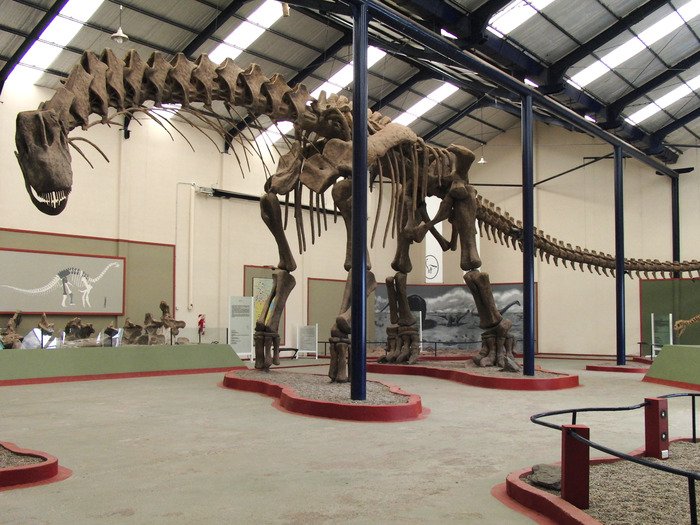This is the 130-foot original skeleton, Argentinosaurus huinculensis reconstruction at Museo Municipal Carmen Funes, Plaza Huincul, Neuquén, Argentina. Credit: Bill Sellers, The University of Manchester
MANCHESTER, England, Oct. 30 (UPI) -- British scientists say they have digitally recreated the walk of an ancient dinosaur for the first time by scanning the fossil of a 130-foot-long specimen.
Experts from the University of Manchester have created a digital version of a Cretaceous-era Argentinosaurus, allowing it to take its first steps in more than 94 million years, the university reported Wednesday.
Working with scientists in Argentina, the Manchester team was able to laser scan the fossil skeleton displayed in an Argentinian museum.
Then, using an advanced computer modeling technique, they were able to recreate its walking and running movements and tested its locomotion ability for the very first time.
"If you want to work out how dinosaurs walked, the best approach is computer simulation," Cambridge researcher Bill Sellers said. "This is the only way of bringing together all the different strands of information we have on this dinosaur, so we can reconstruct how it once moved.
"Argentinosaurus is the biggest animal that ever walked on the surface of the earth and understanding how it did this will tell us a lot about the maximum performance of the vertebrate musculoskeletal system," he said.
The Argentinosaurus weighed 80 tons and some scientists had doubted its ability to move around efficiently due to its size and weight, but the computer modeling showed the big dinosaur was capable of moving at speeds as high as about 5 mph.
"The new study clearly demonstrates the dinosaur was more than capable of strolling across the Cretaceous planes of what is now Patagonia, South America," research participant Lee Margetts said.















